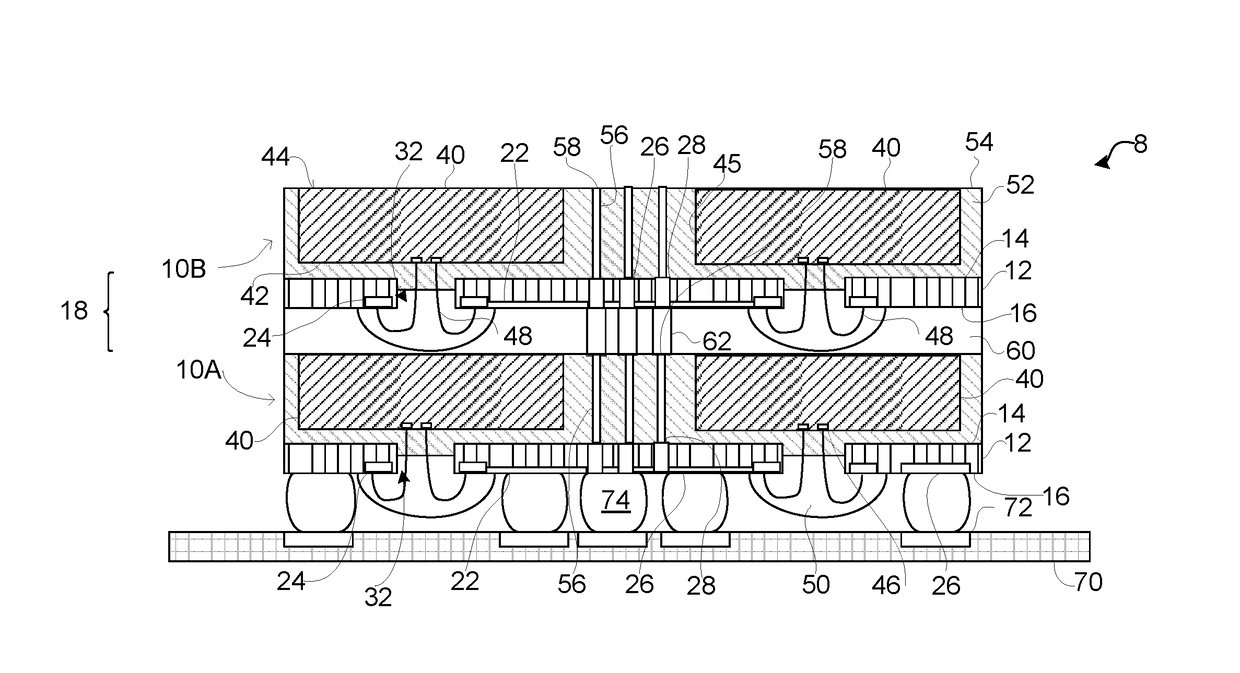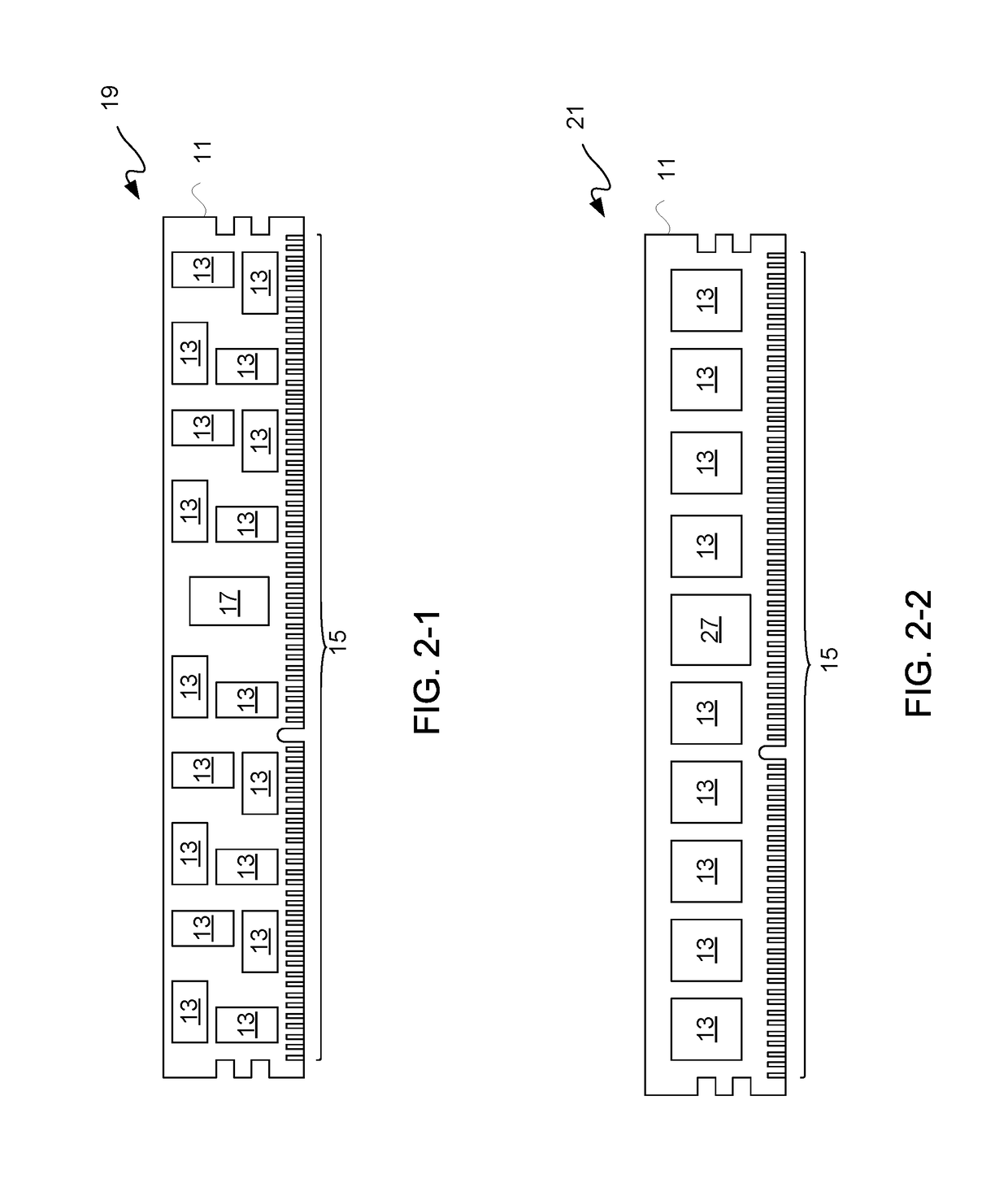Method for Reduced Load Memory Module
a memory module and load reduction technology, applied in memory systems, memory adressing/allocation/relocation, instruments, etc., can solve problems such as reducing the operational speed of communication with such dimming, affecting the performance of memory modules, so as to reduce load and reduce load. load, reduce load for coupling, the effect of sufficient load reduction
- Summary
- Abstract
- Description
- Claims
- Application Information
AI Technical Summary
Benefits of technology
Problems solved by technology
Method used
Image
Examples
Embodiment Construction
[0024]In the following description, numerous specific details are set forth to provide a more thorough description of the specific examples described herein. It should be apparent, however, to one skilled in the art, that one or more other examples or variations of these examples may be practiced without all the specific details given below. In other instances, well known features have not been described in detail so as not to obscure the description of the examples herein. For ease of illustration, the same number labels are used in different diagrams to refer to the same items; however, in alternative examples the items may be different.
[0025]FIG. 1 is a cross-sectional view of an assembly 8. Assembly 8 may include microelectronic packages 10A and 10B. Assembly 8 may be a memory chip 8, and microelectronic packages 10A and 10B may be separated to provide memory chips 8 or may be packaged together as a single memory chip 8. Microelectronic packages 10A and 10B may be coupled to cir...
PUM
 Login to View More
Login to View More Abstract
Description
Claims
Application Information
 Login to View More
Login to View More - R&D
- Intellectual Property
- Life Sciences
- Materials
- Tech Scout
- Unparalleled Data Quality
- Higher Quality Content
- 60% Fewer Hallucinations
Browse by: Latest US Patents, China's latest patents, Technical Efficacy Thesaurus, Application Domain, Technology Topic, Popular Technical Reports.
© 2025 PatSnap. All rights reserved.Legal|Privacy policy|Modern Slavery Act Transparency Statement|Sitemap|About US| Contact US: help@patsnap.com



